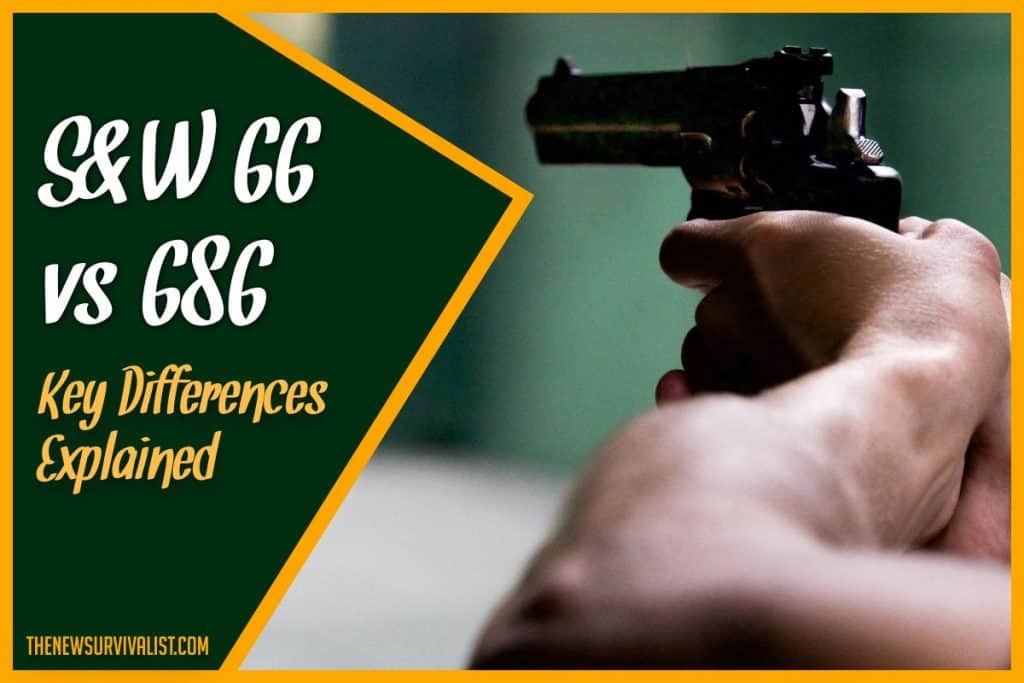Anarchy can quickly occur when SHTF. It is important to have some protection, or deterrent in case this happens. Having a handgun that is reliable, easy to use, and maintain is a good way to deter people with bad intentions towards you, your family, or your properties. A revolver is a good handgun for beginners due to its old, simplistic design that requires little maintenance while being reliable, and powerful.
The Smith & Wesson Model 66 Combat Magnum, and the Model 686 are almost similar in performance, and the choice usually boils down to one’s preference. Some differences that preppers might want to consider are:
- Model 66: 6 bullet chambers.
- Model 66: Shorter barrel, lighter, and easier to conceal.
- Model 686: Comes with 6 or 7 bullet chambers depending on the model.
- Model 686: Heavier and has a longer range due to a longer barrel length.
- Model 686: Better recoil and muzzle control due to its dense frame.
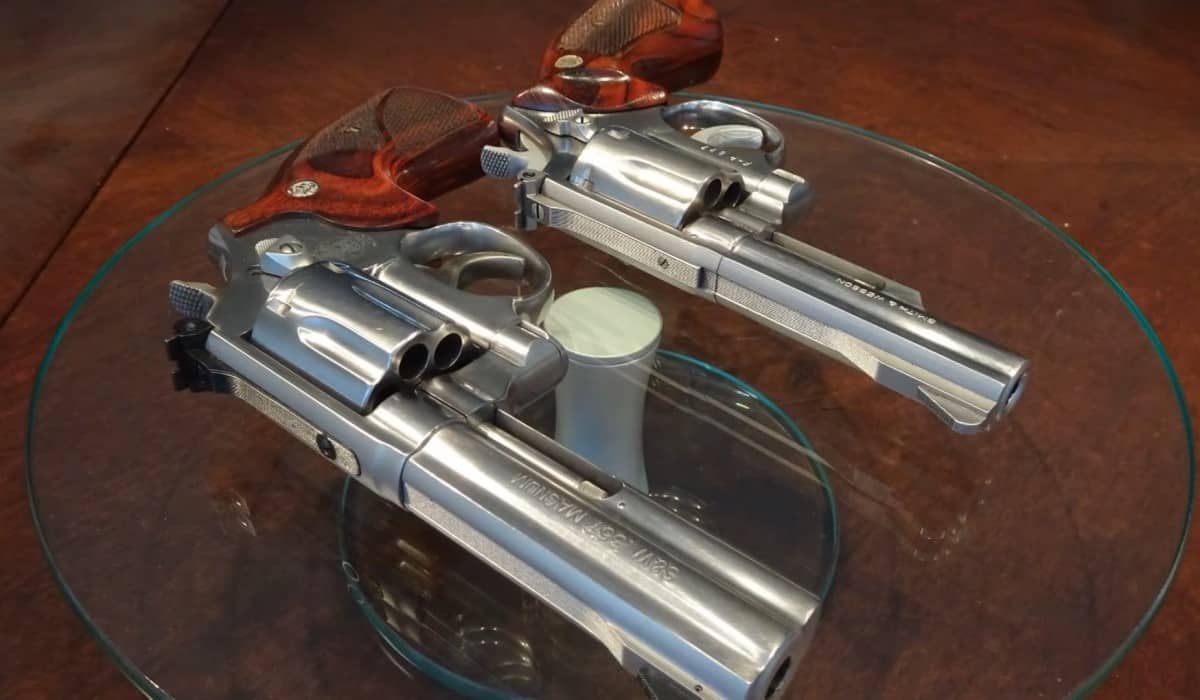
Specifications Table
| Model 66 Combat Magnum | Model 686/686+ | |
| Caliber | 357 Magnum, 38 S&W SPECIAL plus P | 357 Magnum, 38 S&W SPECIAL plus P |
| Capacity | 6 Rounds | 6 or 7 rounds (Model 686+) |
| Total Length | 7.8 inches | 9.56 inches |
| Front Sight | Red Ramp | Red Ramp |
| Rear Sight | Adjustable Black Blade | Adjustable White Outline |
| Action | Single/Double Action | Single/Double Action |
| Grip | Synthetic | Synthetic |
| Cylinder Material | Stainless Steel | Stainless Steel |
| Barrel Material | Stainless Steel | Stainless Steel |
| Frame Material | Stainless Steel | Stainless Steel |
| Barrel Length | 2.75 inches (6.9 cm) | 4.125 inches (10.477 cm) |
| Weight | 33.5 oz. (949.7g) | 39.7 oz. (1125.5g) |
https://www.smith-wesson.com/product/model-66?sku=10061
https://www.smith-wesson.com/product/model-686-0
Frame Size, Weight, and Round Capacity
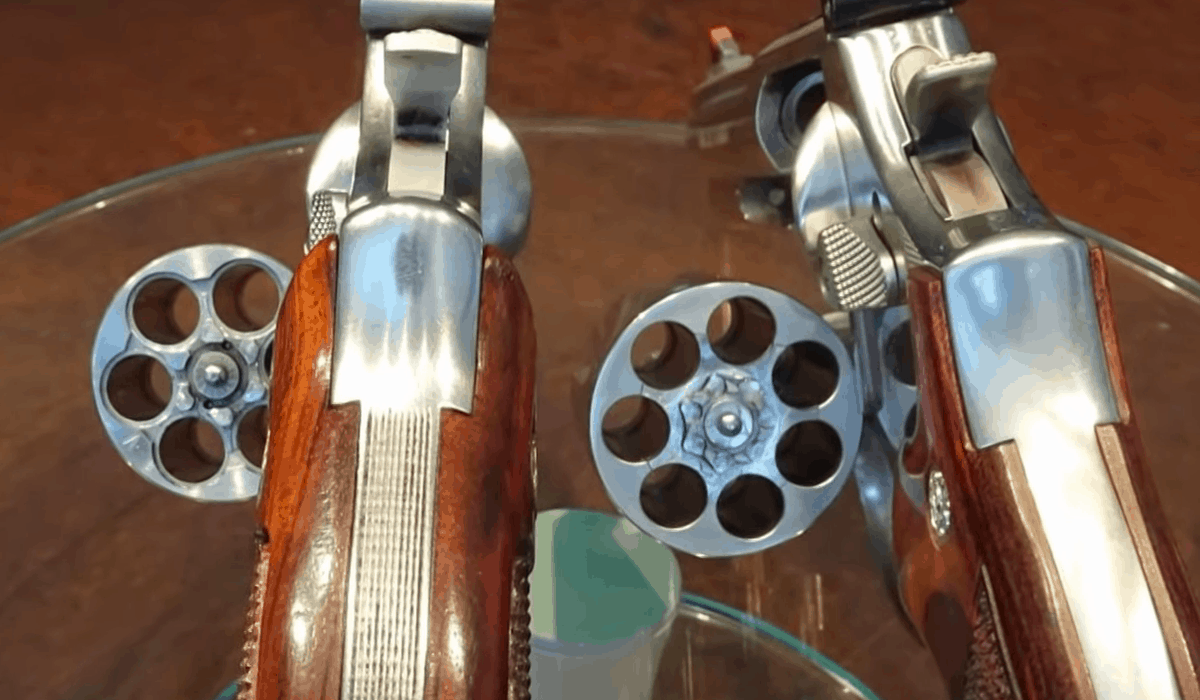
The lettered frame is a naming convention invented by S&W before World War II. A frame will determine the max diameter of the cylinder which holds the bullets. It is also a big factor in how heavy the gun will be, and how good it is in absorbing recoil.
Model 66 is made with a K frame. It was made to fire .38 caliber ammunition, but it can also fire .357 Magnums. It weighs around 33.5 oz. (949.7g) and its cylinder can carry 6 bullets. Due to its smaller frame size, there is no option for a 7-round cylinder. Despite this, its weight is still sufficient enough to absorb recoil.
The model 686 on the other hand is made with an L frame and weighs around 39.7 oz. (1125.5g).
It was made to fire .375 Magnums but can also use .38 ammunitions. Due to its larger frame, the 686 has an option to have a cylinder that carries 7 rounds of bullets. The 686 will absorb recoil better and reduces muzzle flip when more powerful bullets are used because of how dense its frame is.
Other reasons for considering the frame are the longevity of the handgun. Older model 66s were unable to fire continuously for long durations due to their smaller K frame which gets too hot and has an increased chance to crack at the barrel. It is one of the talking points on why people prefer the 686 over the 66.
However, the newer model 66 has been improved and comes with a 2-piece barrel. This change strengthened the gun and eliminated the chances of cracking the barrel when the gun is fired using .357 Magnums.
Barrel Length
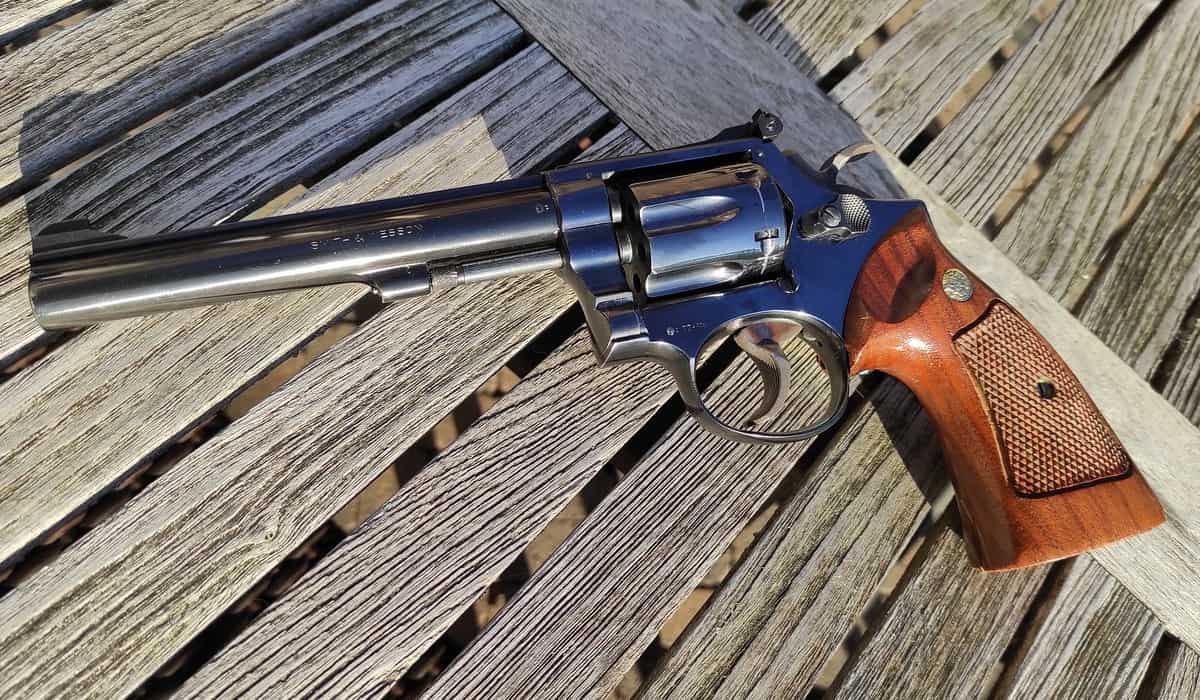
The barrel will affect the final weight, the firing range, and the accuracy of the revolver. On top of this, the concealability and maneuverability will also be affected by how long or short the barrel is. A shorter barrel will be lighter, easier to conceal, and is usable in cramp spaces. A longer barrel increases the effective range due to the increase in bullet speed which also makes it more accurate.
Both the S&W 66 and 686 come in different barrel lengths. The 66’s barrel can range from 2.5 inches up to 6 inches. On the other hand, the 686’s barrel ranges from 2.5 inches up to 8.325 inches.
Other Specs
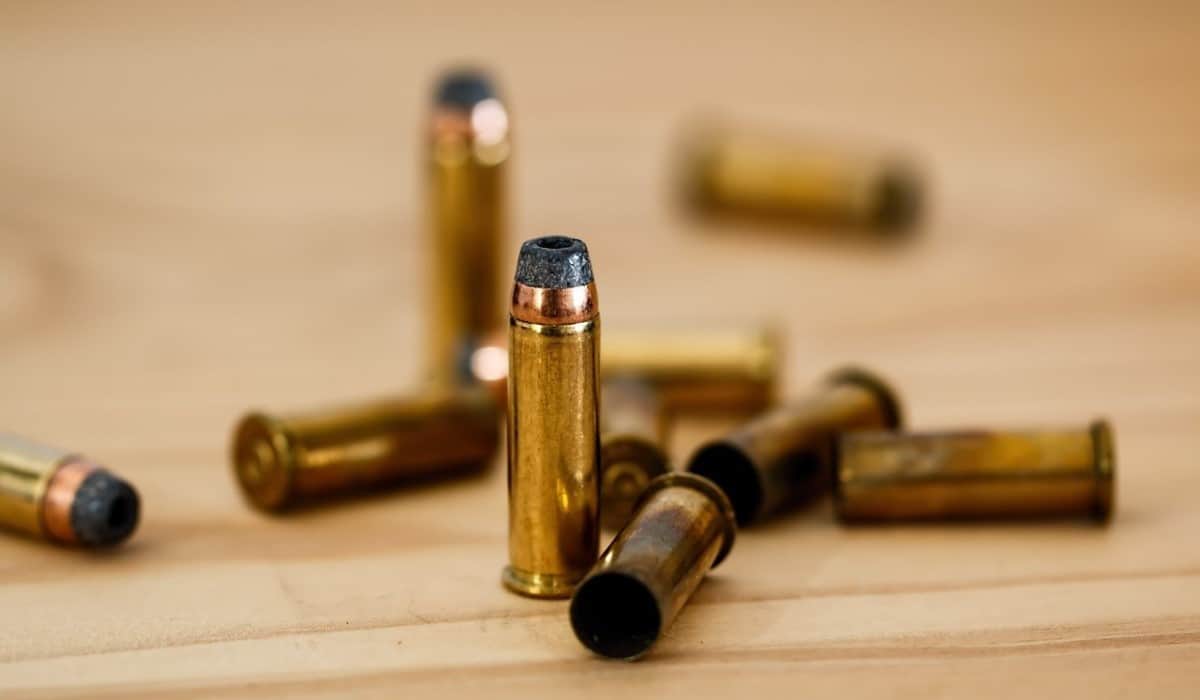
Aside from the differences above, the 66 and 686 are comparable in other aspects. Both offer the same red ramp front sight and similar adjustable rear sights that are customizable. Both revolvers can fire the same types of rounds: 357 Magnum, and 38 S&W SPECIAL plus P. The two are made with the same type of stainless steel.
Despite the slightly larger L frame of the 686, its grip size is almost the same as the 66. The newer model grips are made from synthetic rubber that can be replaced and customized.
In terms of pricing, both revolvers have similar price ranges. As of writing, the model 66’s MSRP from the official Smith and Wesson website is $ 874.00, while the model 686’s MSRP is $ 853.00. However, this will vary greatly for the older models which are more preferred by the majority of gun owners.
The Internal Lock
Guns manufactured by S&W past the year 2000 has an added internal lock. This has been a deal-breaker for some gun owners due to varying reasons. Initially, it was hated due to the political nature of how it came about, however, people who still bought and used the newer models soon came to hate the lock for a different reason.
The lock was attributed to a higher failure rate of the gun, especially when firing with larger caliber ammunition. There were instances of the gun locking by itself during a firing session. However, there is no clear evidence that these accounts are all true.
For the model 66 and 686, this means that older models made before the year 2000 are preferred by a lot of gun owners. This is another thing to be considered when choosing which gun to pick as the price of older gun models will be more expensive than the newer models due to their rarity and demand.
Performance
Anecdotal evidence claims that both revolvers are comparable in terms of accuracy and performance. The only difference is seen with older model 66 which cannot reliably fire .357 Magnum rounds for long durations. This was due to its smaller frame that tended to crack when more powerful rounds were used.
This made the 686 a top choice in terms of reliability or for longer firing sessions. Due to its large, dense frame, and more solid internal mechanisms, it can fire more powerful rounds without much problem. On top of this, its dense frame has some effect on absorbing recoil.
Another anecdotal evidence is that the 66 fires faster due to how close together the bullets are in its cylinder. Its smaller cylinder size means that the ammunitions are spaced closer together and reach the barrel for firing much faster than the larger cylinder of the 686. However, none of these are proven and may have been due to the shooter’s preference.
Which Revolver to Pick
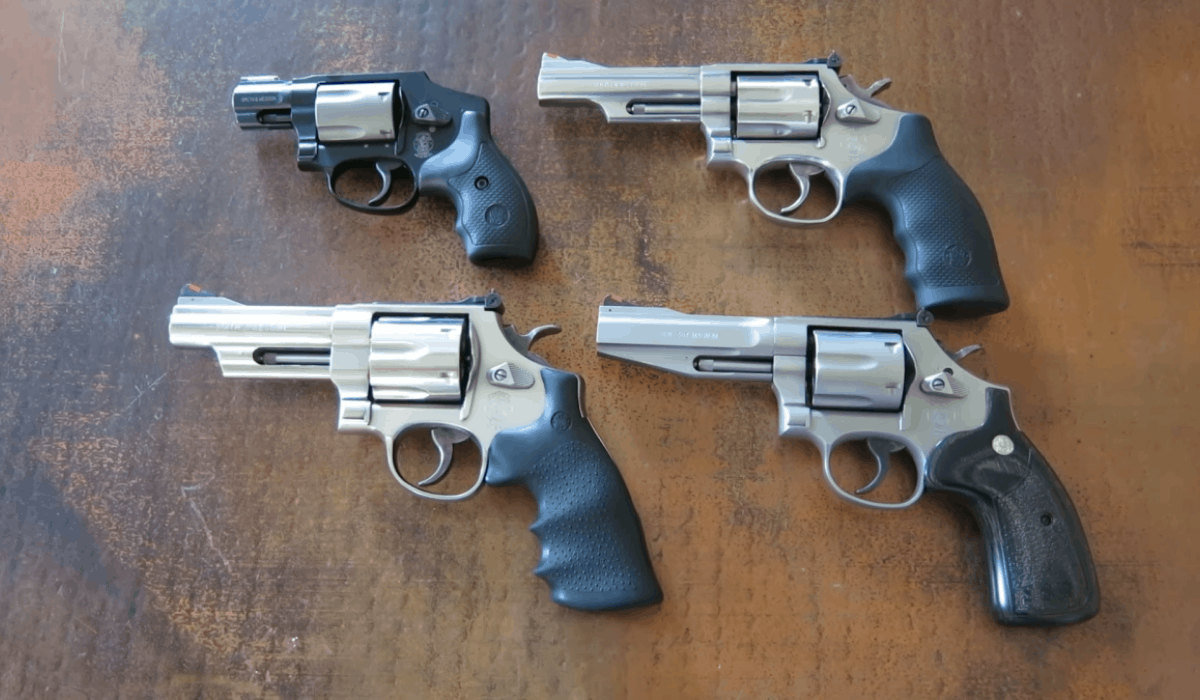
The newer models of both revolvers are comparable in build quality and performance. The choice on which to pick will greatly depend on the purpose of the gun and the person’s preference.
For everyday carry, the shorter, more lightweight 66 will be easier to conceal, and easier to carry due to its weight. The 686 on the other hand is a great gun for shooting in the range. On top of this, an empty 686 can become a more effective club to bludgeon intruders in the case your bullets run out. This is because it is heavier and denser than the 66.
In the end, the choice will depend on your preference. Since the 66 and 686 are similar in performance and build, the best advice in this scenario is to go out and shoot both guns. You can also consider looking into the S&W 627 model so you are aware of all the options available.

